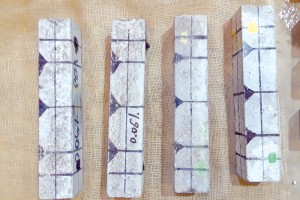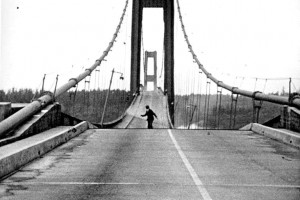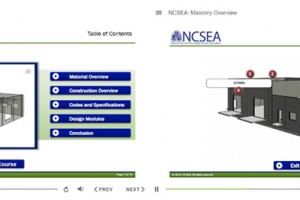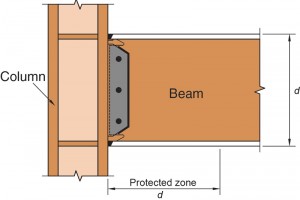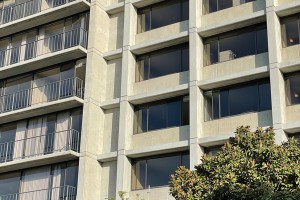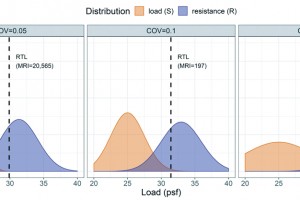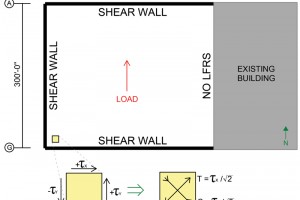Humans have been building with biology for thousands of years. Dimensional lumber and mass timber are mature technologies based on materials produced using biological processes. Today, there is fertile ground for additional research and development of materials based on biological processes or biomimetic principles finding application in structural engineering. Advancements in biotechnology are giving rise to new biomaterials for construction that go beyond wood; bioinspired structures and biomimicry are potential tools to augment existing and entirely new structures. The term biomimicry is derived from the words bios and mimicry coming from the Greek language meaning life and imitation, respectively. The fundamental tenet of biomimicry is to mimic nature and leverage the biological principles that have resulted from evolutionary processes.
…Review Category : Articles
Galloping Gertie, Part 2
The design evolution for the Tacoma Narrows Bridge (aka Galloping Gertie) was presented in the February 2022 issue of STRUCTURE. Soon after opening, the Tacoma Narrows Bridge exhibited significant vertical movements under various wind conditions. To address the issue, the owners and designers tried various modifications and were investigating additional steps to control or at least minimize the motions.
…If you are a practicing structural engineer, you have no doubt come across various forms of contracts outlining the terms of your agreements. These contracts may be with parties that engaged your services or from whom you sought services. You may have your own contract composed by your legal counsel. More likely, your contract is based on a template created by an organization that develops and periodically updates standard contracts. This article provides a brief overview of the types of contracts you may encounter and contract offerings available from several respected sources.
…Occasions may arise where parties collaborate on a project involving proprietary or otherwise sensitive information. To prevent that information from being misused, shared, and/or publicized, the parties often enter into a non-disclosure agreement (NDA). However, breaching an NDA can have serious consequences, even in cases of accidental misuse or disclosure. Below are some basic steps you can take to protect yourself and your company if you are working within the confines of an NDA.
…While the effect of the Covid pandemic on today’s workforce will be written about for years, one segment of this workforce that I have seen affected directly is recent college graduates.
…Part 4: Concrete and Steel (Chapters 19 and 22)
This five-part series discusses significant structural changes to the 2021 International Building Code (IBC) by the International Code Council (ICC). Part 4 includes an overview of changes to Chapter 19 on concrete and Chapter 22 on steel. Only a portion of the total number of code changes to these chapters are discussed in this article. More information on the code changes discussed here can be found in the 2021 Significant Changes to the International Building Code, available from ICC (Figure 1).
…Part 2
A recent seismic retrofit project provided an opportunity to test an interior concrete column retrofit with a three-sided, fiber-reinforced polymer (FRP) wrap with FRP through-anchors on the fourth side. The testing demonstrated the effectiveness of this application, which could be applied to columns or beams with deficient shear strength in situations where site conditions prevent access to one side of the member. Please refer to Part 1 (STRUCTURE, January 2022) for additional testing information.
…What Has Changed and Why?
The new ASCE 7-22, Minimum Design Loads for Buildings and Other Structures, ground snow load maps target uniform reliability rather than a uniform hazard (Bean et al., 2021). Previously, the ASCE 7 snow loads used a uniform-hazard 50-year mean recurrence interval (MRI) with a 1.6 load factor. These loads resulted in non-uniform reliability for structures across the country. The site-specific ground snow load determination is no longer tied to a uniform hazard (i.e., X-year recurrence interval) but to the safety or reliability levels stipulated in Chapter 1 of ASCE 7. The new strength level loads are used with a load factor of 1.0, as shown in Equation 1, and were selected to create uniform reliability across the country. These loads are mapped in the new ASCE 7-22 Chapter 7 in the online Hazard Tool and additionally reduced the number of case study regions by 90%.
…During my two-plus year tenure as the Editorial Board Chair and the several years before that as a Board member, STRUCTURE has received several proposed articles on three topics: 1) the experiences of engineers with many years in practice, 2) the current state of the industry and the inner workings of firms, and 3) the perceived unnecessary expansion of the building code and over-regulation. Of course, the same individuals did not necessarily write these articles. Still, if I were to do some research, I would expect to find that the authors have similar professional experience, job tenure, standing in their firms, firm ownership, and socio-economic situations. Not to generalize, but these engineers are likely to be older and in the middle or later parts of their careers.
…Many engineers consider rectangular structures with light gauge metal deck diaphragms unstable if they are laterally supported on only three sides. Given the standard assumption that light gauge metal deck diaphragms are completely flexible, this type of structure, often referred to as a 3-sided box, would be unstable. While this assumption is often useful for diaphragm design, it is not strictly true. Light gauge metal deck diaphragms have stiffness, and 3-sided box structures are stable when designed properly. A design method for this type of diaphragm was introduced in the Steel Deck Institute’s Diaphragm Design Manual (DDM) 2nd Edition in 1995. Since then, many single-story structures have been designed using this method, demonstrating its validity. Additional information can be found in the current DDM 4th Edition in Section 10, Example 7.
…
